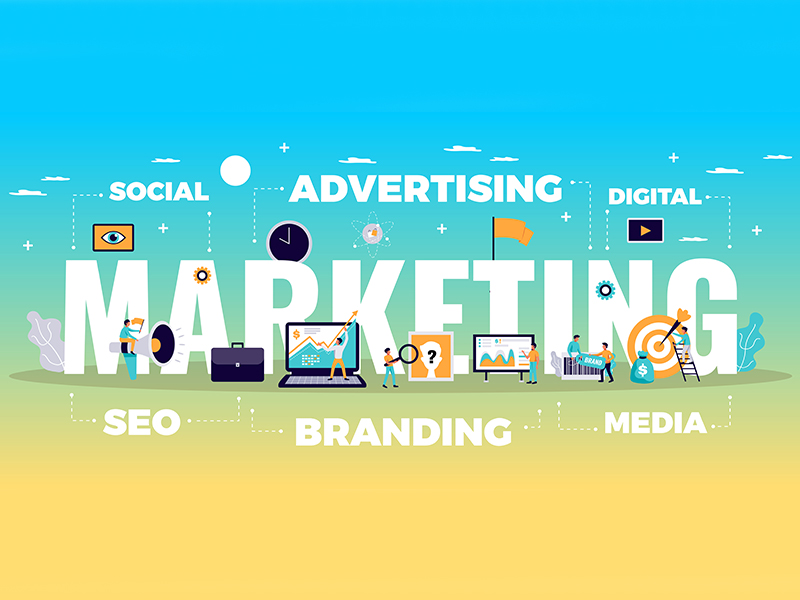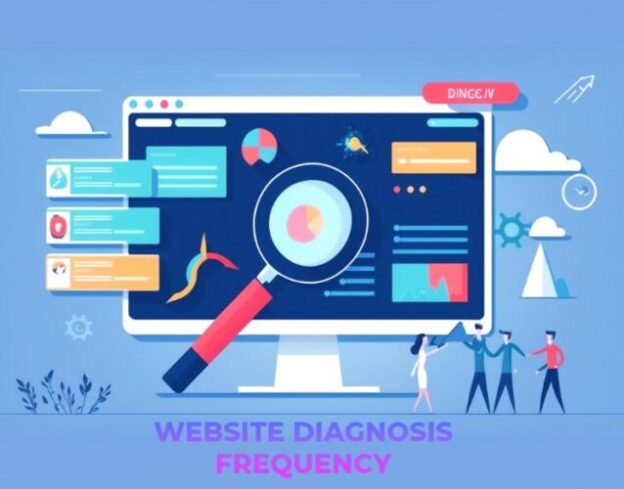Introducing measures that B2B companies have succeeded in increasing the number of inquiries.
In recent years, the number of inquiries from B2B companies has increased, all facing the same problem such as “I want to increase the number of inquiries.” Most of the B2B companies used sales methods of exhibitions, seminars, telephone calls, and face to face appointments. However, due to the epidemic of the COVID-19 and the Thai government announced and encouraged all the citizens to work from home, all of those main sources became difficult. Under this restriction, many B2B companies in Thailand are shifting the focus of their sales activities to online. This time, we will introduce specific online measures that B2B companies should adopt.
Introduction
The spread of the new COVID-19 was also a trigger, but many B2B companies have said for several years that “although we have created websites in the past, it can only be used for online product catalogs.” We have received inquiries such as “I didn’t expect much results that could be achievable from a website” and “I don’t know how to shift to online”.
Since “Customer acquisition” is the starting point of the business cycle, each company has developed a sales strategy suitable for each company, but for some time in Thailand, it has become difficult to approach face-to-face, therefore the first key measure should be focus on “customer acquisition”. The core of attracting customers online is the “website,” which is the face of the company. First, we will review the marketing measures of outbound and inbound, and introduce the flow of how B2B companies can obtain inquiries from potential customers.
What is Outbound Marketing?

Outbound marketing is a marketing measure in which a company takes an outward direct approach to existing customers and potential customers, such as by calling or visiting. Before COVID-19, the sales activities that B2B companies generally performed are this outbound marketing.
What is Inbound Marketing?
Inbound marketing, on the other hand, is a marketing method in which potential customers contact companies for the products and services they need. By providing information and services to potential customers, creating relationships, concluding contracts, and nurturing them into customers, we will increase customer value and lead to corporate growth.
Many executives still misunderstand that “If you launch a website, automatically there will be access from potential customers”, but just launching a website without any marketing strategies will not help for website access.
In order for inbound marketing to be successful, it is necessary to enhance the “website” that is the point of contact and implement measures to gain access.
In Thailand, users (potential customers) use Google search engine in order to find information, therefore how to make Google recognize and evaluate your website and to display it at the top of the search results will be the first goal. You will be asked to access the company’s website displayed in Google’s search results, and while you will be wandering around and browsing the information you are looking for, it will eventually lead to conversions (inquiries, membership registration, etc.).

Furthermore, nowadays, even if you can contact potential customers and connect to business negotiations with outbound marketing methods, it is rare that you reach a contract on the spot, and usually these potential clients will search again on Google about your company and make comparisons with other companies. This is normal behaviour.
In addition, the need for outbound marketing is gradually diminishing because the process of corporate recognition, product recognition, and even purchasing decisions can be completed on the website without face-to-face negotiations.
Some of our client companies also requested from their main existing customers, “Don’t bother to visit the sales staff with the catalog anymore. I want you to be able to do the final examination on the website because we will consider it internally.” There is also a case where it was done.
In this way, how to enhance the website and provide useful information to browsing users while trying to differentiate it is the most important point for acquiring potential customers.
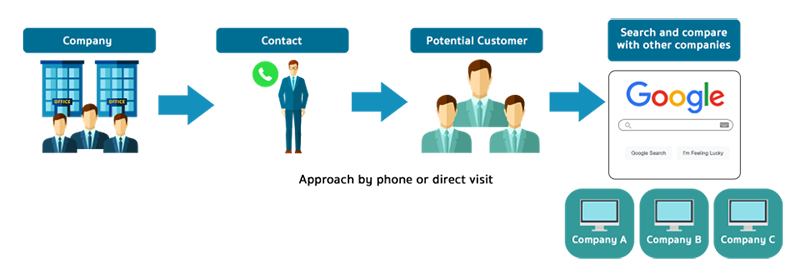
Importance of the website
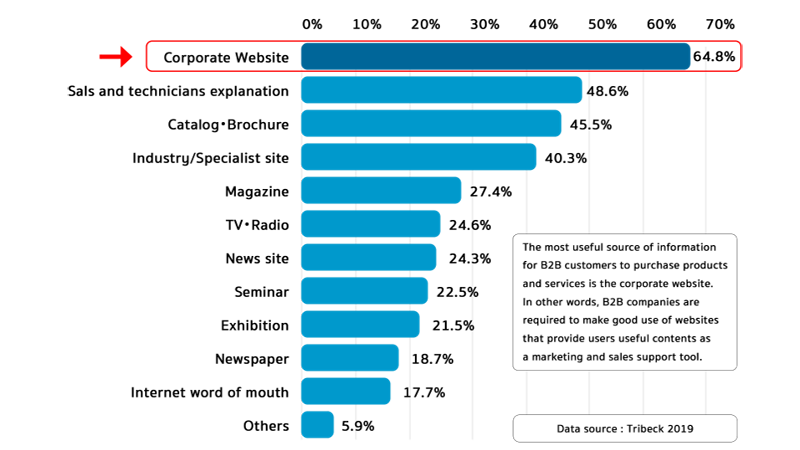
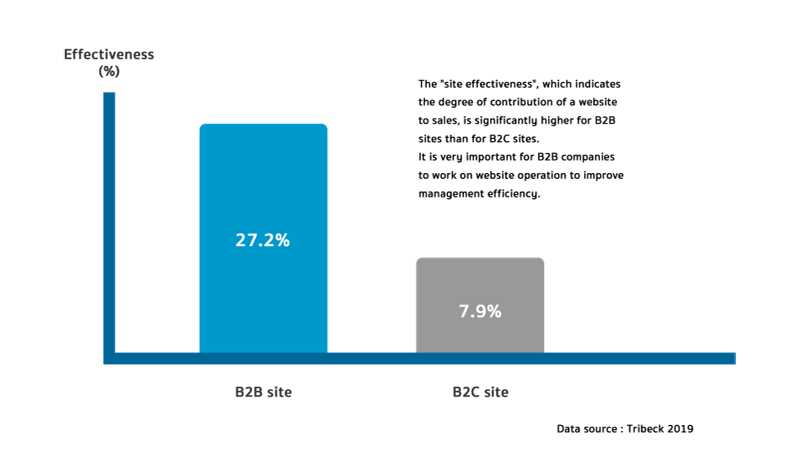
As this data shows, websites have become extremely important, and gathering information on websites has become more commonplace than traditional tools such as sales visits and catalogs and brochures.
Naturally, the contribution of website sales to B2B companies is greater than that of B2C companies that can purchase products in stores or online marketplaces.

The basic flow of inbound marketing that B2B companies aim for is to have potential customers access the website, circulate the information content provided on the site, and finally connect to inquiries, make contracts, and lead to sales.
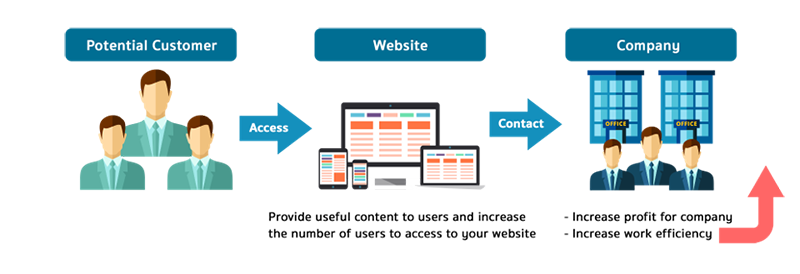
I explained that the role of the website is very important for achieving this. For what purpose users discovered and accessed your site, how they wandered around the site, what pages they visited for a long time, and whether they left the site after getting the information they were looking for. By properly grasping and analyzing user behavior such as, the conversion (CV) values such as “inquiry”, “request for materials”, and “member registration” will change significantly in the end.
Therefore, the website should be easy to access, design and layout, ease of use, visibility, whether the lead to the desired information is properly drawn, and whether the information required by the prospective customer can be provided accurately. It is necessary to make it while holding down one by one, and grasping what should be improved and how to improve it with data is an important point to lead to business results.
Specific measures to connect to business with the website at the core
Introducing how B2B companies actually create businesses with their websites at the core.
First, grasp user behavior. In order to connect to the business with the website as the core, each measure will be implemented in the following phases.
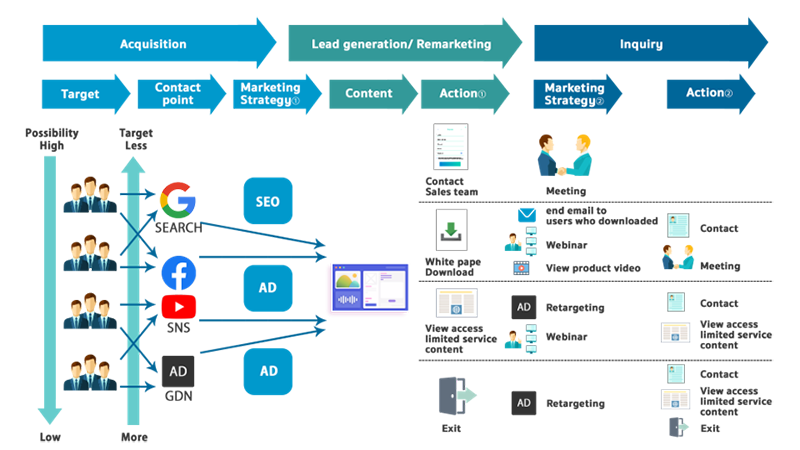
Phase 1 :Acquisition
Phase 2:Lead Generation/ Remarketing
Phase 3:Inquiry
In Phase 1, “Acquisition,” we will talk about “how to improve access” and “how to make contact with potential customers.” There are three main measures to create customer contact points.
1. SEO
This is a necessary measure to display it at the top of Google’s search result page. By taking SEO measures and displaying the website at the top of the search result page, we are able to increase the number of customers and eventually lead to the achievement of conversions such as “inquiries” and “requests for materials”, which are the main goal of utilizing the website. The users are always looking for the “answer” on the internet that can solve the problem that they are facing. Therefore, it is necessary to provide the information that the user will be looking for on the site while estimating the search intention of the user who has flowed in from the search.
It is also important that the content is easy for users to find and that it is easy to read. In the case of B2B companies, service content and business content tend to be provided in the form of an online catalog, but users leave the page without being very satisfied with “I do not know what to do from here”. There are many other possible cases. It’s difficult to be ranked high in search results unless you can grasp the search intent of your target user and provide useful information that is satisfying to that user.
2. Social Media Management
This is a measure to continuously operate social network media (Facebook, Instagram, Youtube, etc.) used by 80% of the Thai population as customer contact points to attract customers. In addition to the role of disseminating corporate information, it is possible to carry out activities to strengthen engagement (relationship with users) through communication with users. It’s easy to misunderstand that social media is different from your target, but since it is also the most used medium for collecting business information in Thailand, even B2B products and services are effective. While utilizing social media, it will lead to an influx of “more details” to the website. By linking the website and social media well, it will be possible to connect to inquiries.
3. Online Advertisement
This is a measure to display advertisements for products and solutions on the websites that the target browses, and to inflow from there to the company’s website.
Of course, there are other inflow measures that combine events that are held offline, but while there are restrictions on events that attract customers, the main focus is on measures that can be completed online.
The details of the measures differ depending on the services and products of the company, but we mainly implement the above three measures in an appropriate combination to get users to access the website. This is because in order to connect to inquiries, it is necessary to first make people aware of the existence of the website and to access as many potential customers as possible. After that, as shown in the flowchart above, we will develop efficiently while separating the measures to be applied to each user behavior.
Importance of access analysis after “Acquisition” on website
Website access analysis is important at the same time as increasing the number of site visitors. By utilizing access analysis tools we are able to analyse in depth for,
- User behaviour
- Most popular page the user viewed
- Where and how the user come to the page
- What page did the user viewed before coming to the contact us page
Etc.
It is possible to visualize various dimensions.
There are many access analysis tools, but at our company, a team of experts will analyze users behavior while utilizing “Google Analytics (GA)” which is provided by Google.
By properly grasping the number of accesses and users of the entire site, user behavior of a specific page, etc., it is possible to clearly understand the current state of the site, how the site is migrating and browsing by users, and based on the hypothesis that could be visualized based on the analysing, we are able to find out the solutions for improvements.
For example,
If you can understand the particular behaviour such as “Many users who visited the top page have transitioned to the company profile page and immediately left”, you can enrich the information on the company profile page or other details in the page. Improvement measures such as creating a lead to the page can be considered. If in the other case, that the behaviour was found as “there is a number of website access, but it does not lead to inquiries or material requests at all”, we could collect the user behaviour flow data and investigate which page has become the bottleneck for user to leave the page before visiting the contact us page. Possible that there is not much information on the service page that users were looking for, or maybe the contact us page was too much of a hassle for user to fill in all the columns before submitting.
Furthermore, if data such as “Users from Facebook ads spends longer time on blogs and column pages and they tend to go to the service details page after” is shown, while increasing the advertising budget for Facebook ads and increasing the number of inflows we can think of measures such as increasing the number of articles on blogs and column pages as well. For many B2B companies, increasing the “number of inquiries” and “request for materials” can be mentioned, but since the index of site access analysis differs and the improvement measures also change depending on each purpose, setting the goal in the beginning becomes very important.
As described above, we will build relationships after understanding the behavior within the website for each user group. In some cases, you make an inquiry immediately after visiting the site and have a business talk at once, but in many cases, the user will visit the site as a repeater for returning several times while comparing with other companies. We will encourage inquiries without interrupting the relationship with such users who are “interested but have not yet made a decision”. It develops users into leads.
These include retargeting ads based on behavioral data (ads that follow you with ads for products and services that interest you even after you leave the site) and download white papers (instead of providing the data you want). You can register your contact information), invite you to a webinar, distribute product videos, etc. to keep your interests and interests, and lead to conversion.
Of course, some users will completely leave the process, but it depends on business creation and sales contribution to get as many conversions as possible.
This time, we introduced the marketing strategies that could be used for “Acquisition” in Phase 1. In the next article, we would like to explain Phase 2 of “Lead Generation/ Remarketing”
ICOMM AVENU support the following job scope
Website development

from design planning to construction
Website maintenance
after the website is launched

content/image upload and adjustment
SEO support
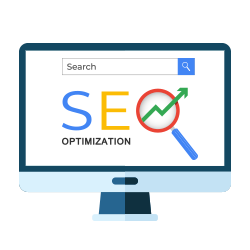
consulting and format creation such as what kind of SEO content should be created based on the user’s search intention
Website access analysis

not just Google Analytics reporting, but also problem extraction, hypothesis setting, and proposal of improvement measures by analyzing user behavior
Online advertisement
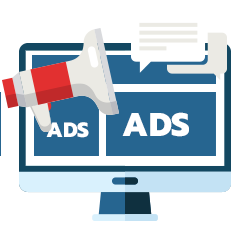
keyword analysis, banner design production, video production
Social Media management

content creation, posting management, monitoring user reaction, analysis, proposal of improvement measures



